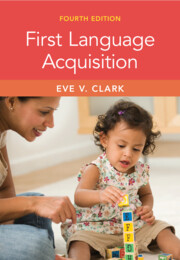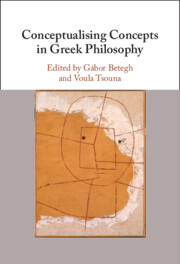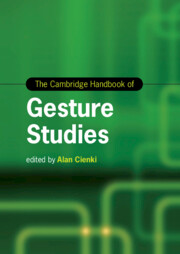762 results

First Language Acquisition
- Coming soon
-
- Expected online publication date:
- June 2024
- Print publication:
- 20 June 2024
-
- Textbook
- Export citation
Chapter 21 - Future Directions
- from Part II - Multidisciplinary Perspectives on Youth Climate Distress
-
-
- Book:
- Climate Change and Youth Mental Health
- Print publication:
- 13 June 2024, pp 403-419
-
- Chapter
- Export citation
Chapter 2 - Definitions and Conceptualizations of Climate Distress
- from Part I - Conceptual Foundations of Climate Distress in Young People
-
-
- Book:
- Climate Change and Youth Mental Health
- Print publication:
- 13 June 2024, pp 21-39
-
- Chapter
- Export citation
34 - Queer DiaspoRican Circuits
- from Space and the Regional Imaginary of Queer Literature
-
-
- Book:
- The Cambridge History of Queer American Literature
- Published online:
- 17 May 2024
- Print publication:
- 06 June 2024, pp 628-643
-
- Chapter
- Export citation
6 - The Poem in Translation
- from Part I - Ideas of the Poem
-
-
- Book:
- The Cambridge Companion to the Poem
- Published online:
- 30 May 2024
- Print publication:
- 06 June 2024, pp 99-114
-
- Chapter
- Export citation
11 - Diction
- from Part II - Forms of the Poem
-
-
- Book:
- The Cambridge Companion to the Poem
- Published online:
- 30 May 2024
- Print publication:
- 06 June 2024, pp 178-195
-
- Chapter
- Export citation
31 - Two-Spirit Writers and Queer Native American Literature
- from Race and the Politics of Queer and Trans Representation
-
-
- Book:
- The Cambridge History of Queer American Literature
- Published online:
- 17 May 2024
- Print publication:
- 06 June 2024, pp 581-598
-
- Chapter
- Export citation
[Re]Integrating a dispersed agenda: advancing archaeological research in Central Eurasia
-
- Journal:
- Antiquity , First View
- Published online by Cambridge University Press:
- 31 May 2024, pp. 1-9
-
- Article
-
- You have access
- Open access
- HTML
- Export citation
Chapter 11 - Faust
- from Part II - Literature
-
-
- Book:
- Goethe in Context
- Published online:
- 16 May 2024
- Print publication:
- 23 May 2024, pp 104-112
-
- Chapter
- Export citation
From infancy to eight: How early maternal mental health, emotion reminiscing, and language shape children’s mental health
-
- Journal:
- Development and Psychopathology , First View
- Published online by Cambridge University Press:
- 22 May 2024, pp. 1-15
-
- Article
-
- You have access
- Open access
- HTML
- Export citation
Lost in translation? Deciphering the role of language differences in the excess risk of psychosis among migrant groups
-
- Journal:
- Psychological Medicine , First View
- Published online by Cambridge University Press:
- 22 May 2024, pp. 1-8
-
- Article
-
- You have access
- Open access
- HTML
- Export citation
Screening for Cognitive Impairment in Bilinguals: What Is the Influence of the Language of Assessment?
-
- Journal:
- Canadian Journal of Neurological Sciences , First View
- Published online by Cambridge University Press:
- 03 May 2024, pp. 1-6
-
- Article
- Export citation
Chapter 9 - Epicureans on Preconceptions and Other Concepts
-
-
- Book:
- Conceptualising Concepts in Greek Philosophy
- Published online:
- 25 April 2024
- Print publication:
- 02 May 2024, pp 203-236
-
- Chapter
- Export citation

Conceptualising Concepts in Greek Philosophy
-
- Published online:
- 25 April 2024
- Print publication:
- 02 May 2024

The Cambridge Handbook of Gesture Studies
-
- Published online:
- 01 May 2024
- Print publication:
- 18 April 2024
The spectre of Ma Phyu? Loyalty, competence, and the spatial dynamics of imperial administration in colonial Burma
-
- Journal:
- Modern Asian Studies , First View
- Published online by Cambridge University Press:
- 12 April 2024, pp. 1-27
-
- Article
-
- You have access
- Open access
- HTML
- Export citation
Canadian Practice and Recommendations on Functional MRI to Lateralize Language in Epilepsy
-
- Journal:
- Canadian Journal of Neurological Sciences , First View
- Published online by Cambridge University Press:
- 04 April 2024, pp. 1-8
-
- Article
-
- You have access
- Open access
- HTML
- Export citation
2 - The Acquisition of Knowledge and Plants, from Madagascar to China
-
- Book:
- Creolised Science
- Published online:
- 03 April 2024
- Print publication:
- 04 April 2024, pp 51-79
-
- Chapter
- Export citation
Introduction
-
-
- Book:
- The Cambridge Companion to British Theatre since 1945
- Published online:
- 14 March 2024
- Print publication:
- 21 March 2024, pp 1-20
-
- Chapter
- Export citation
Language and executive function relationships in the real world: insights from deafness
-
- Journal:
- Language and Cognition , First View
- Published online by Cambridge University Press:
- 18 March 2024, pp. 1-23
-
- Article
-
- You have access
- Open access
- HTML
- Export citation



